Where Did The Term ‘Scab’ Come From?
- Oops!Something went wrong.Please try again later.
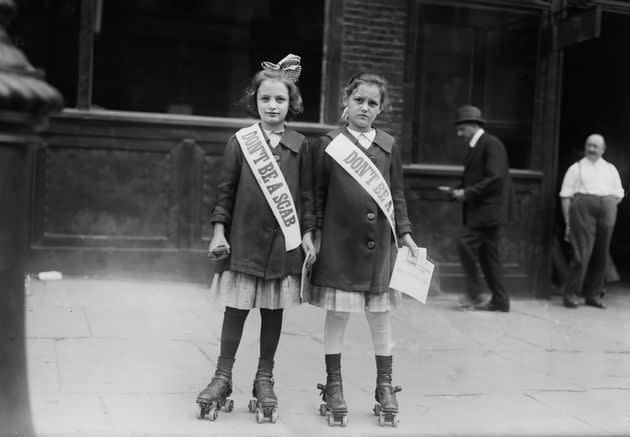
Two young strike sympathizers on roller skates in the U.S. circa 1910s.
Labor unions have made big headlines this year thanks to organized activity like the Writers Guild of America and French pension reform strikes. During demonstrations like these, a very interesting word tends to arise: scab.
In the context of organized labor, scab is a derogatory term referring to a worker who declines to join a union, leaves the union or accepts a job during a strike in the place of a striking employee. It’s someone who “crosses the picket line” during an ongoing strike, thus weakening the striking workers’ bargaining power.
A scab might also be someone who works for lower wages and under different conditions than those set by the union. The words “strikebreaker” and the more old-fashioned “blackleg” and “knobstick” have also been used in place of scab.
Since around 1989, according to the Guardian, many unions have called out companies employing nonunion labor by placing a large inflatable rat at their worksites. The rat quickly earned the nickname “Scabby” and generally features large teeth and a scab-covered belly.
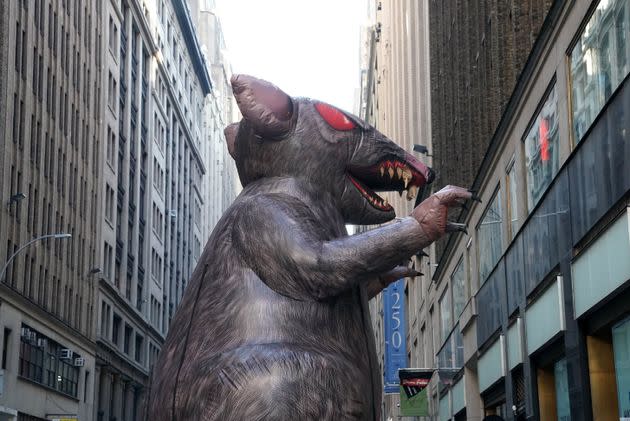
A giant inflatable rat in midtown Manhattan on Nov. 26, 2019.
For those less familiar with union jargon, the word “scab” typically evokes the hard coating that forms on a wound as it heals. But is that where this derisive labor movement term came from?
“‘Scab’ started getting used for scoundrels and disreputable people in the late 16th century, possibly related to a similar use of ‘schabbe’ in Dutch,” lexicographer and Wall Street Journal columnist Ben Zimmer told HuffPost. “Then in the late 18th century, it got applied to workers who refused to join trade unions.”
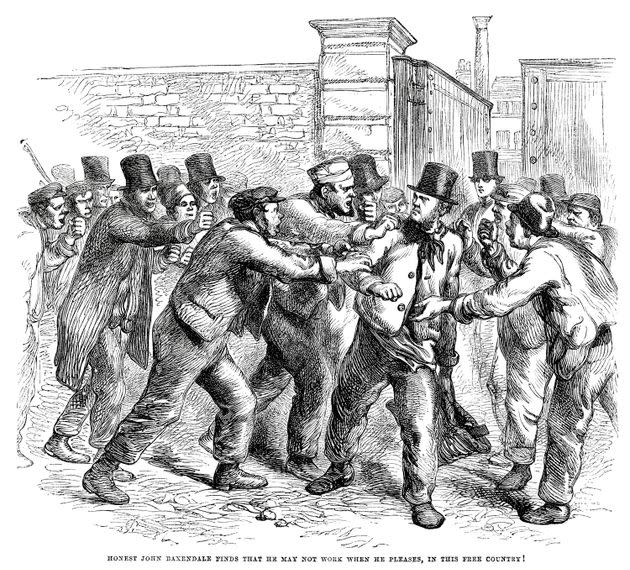
A vintage engraving from 1862 showing a strikebreaker being attacked by a group of workers who are on strike at the factory.
The scoundrel definition of scab came well after its bodily injury-related use. The Oxford English Dictionary sources the first recording of scab in 1250 to mean “skin disease.” Around 1400, the word appeared with its more modern definition of a crust that forms over a cut or sore.
As Zimmer noted, scab had taken on its meaning as a slang insult by the 1580s. Many researchers believe this is related to the idea of a disreputable person’s lifestyle ― that a scoundrel might have scabs and sores due to a disease like syphilis.
If so, the late 1700s shift from a general good-for-nothing pejorative to a despised worker who refuses to join a labor movement is an unsurprising progression. It’s also quite fitting, as a scab worker helps an employer stop bleeding out more money, much like clotted blood becomes a hard formation over a wound.
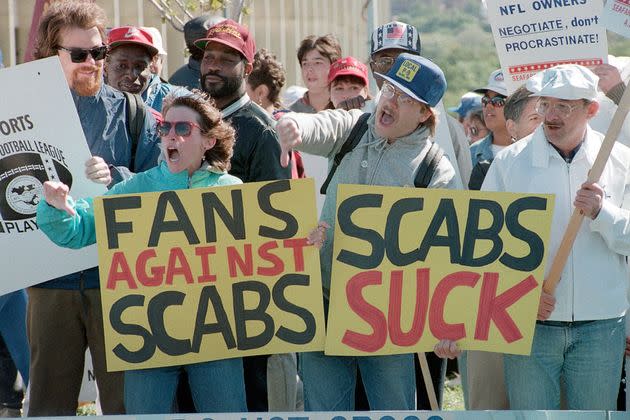
In 1987, supporters of striking National Football league players in Washington, D.C. voiced their displeasure with fans attending a game against the St. Louis Cardinals.
Zimmer noted that the Oxford English Dictionary cites Bonner & Middleton’s Bristol Journal from July 5, 1777, as the first use in that context:
To the Public. Whereas the Master Cordwainers have gloried, that there has been a Demur amongst the Men’s and Women’s Men;—we have the Pleasure to inform them, that Matters are amicably settled... The Conflict would not been so sharp had not there been so many dirty Scabs; no Doubt but timely Notice will be taken of them.
Zimmer also pointed to another Oxford example from the Articles of the Friendly and United Society of Cordwainers ― a type of shoemaker ― from June 4, 1792:
Some of the Articles make mention of scabs. And what is a scab? He is to his trade what a traitor is to his country; though both may be useful to one party in troublesome times, when peace returns they are detested alike by all. When help is wanted, he is the last to contribute assistance, and the first to grasp a benefit he never laboured to procure. He cares but for himself, but he sees not beyond the extent of a day, and for a momentary and worthless approbation, would betray friends, family and country. In short, he is a traitor on a small scale. He first sells the journeymen, and is himself afterwards sold in his turn by the masters, till at last he is despised by both and deserted by all. He is an enemy to himself, to the present age and to posterity.
“In these early uses, a ‘scab’ was someone who didn’t join a labor union, but in the 19th century, its meaning shifted to refer specifically to a strikebreaker or someone crossing a picket line,” Zimmer explained.
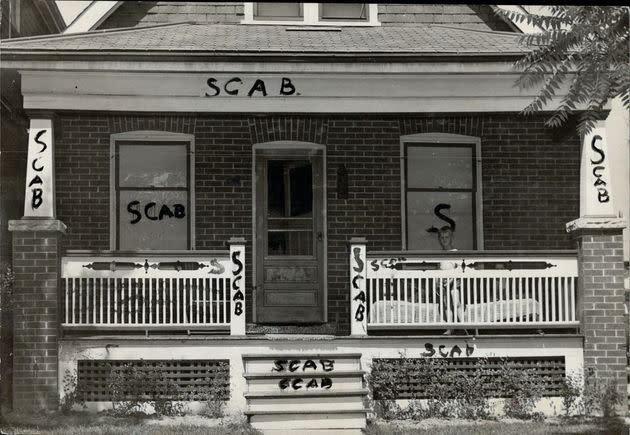
A strikebreaker's house in Canada is shown smeared with the painted word scab in 1946.
An early 20th-century poem typically attributed to Jack London called “Ode To A Scab” illustrates attitudes toward strikebreakers in that era. It begins:
After God had finished the rattlesnake, the toad, and the vampire, He had some awful substance left with which He made a scab. A scab is a two-legged animal with a corkscrew soul, a waterlogged brain, and a combination backbone made of jelly and glue. Where others have hearts, he carries a tumor of rotten principles.
In 2023, those who cross picket lines are certainly not held in much higher esteem by members of labor unions and beyond. The WGA has a scab-reporting website where members are required to identify known strikebreakers. Disciplinary measures include expulsion or suspension from union membership, monetary fines and censure.
That’s on top of the public shaming scabs endure on social media and in-person protest signage, but altogether, it may be a relatively light modern punishment considering that strikebreaking historically led to brutalviolence.
